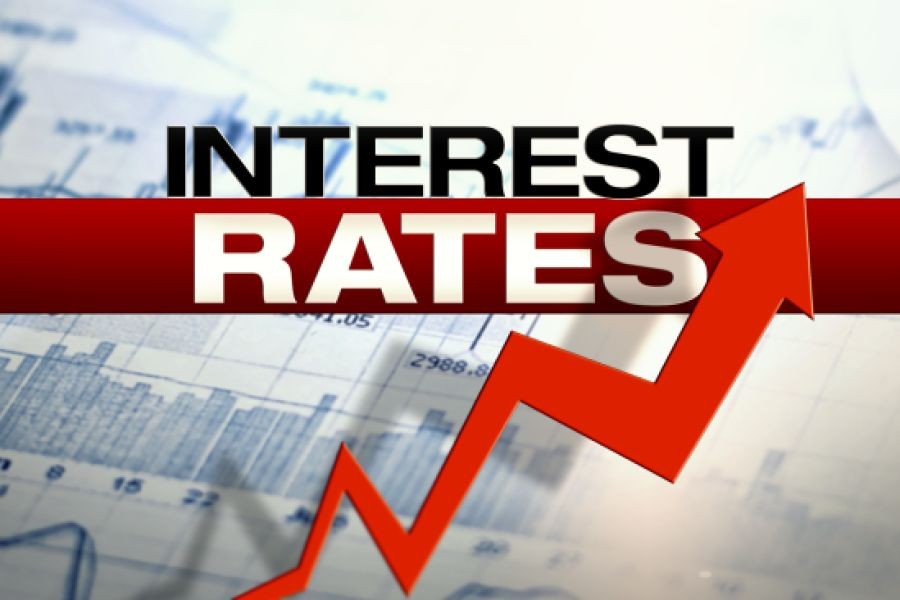In 2025, the rising interest rates in Australia will create a ripple effect across the investment landscape, impacting everything from equities to real estate. As the Reserve Bank of Australia (RBA) gradually increases rates to combat inflation, investors face a complex decision-making environment. This article delves into the implications of these changes, offering insights into how investors can navigate the challenges and opportunities that arise from a tightening monetary policy.
Understanding the Rate Increase: A Necessary Adjustment
To comprehend the driving forces behind the rate hike, it's essential to grasp the current economic context. The RBA's decision to raise interest rates stems from a need to curb inflation, projected to reach 4% by 2025. This marks a significant shift from the historically low rates seen during the pandemic, when the RBA cut the cash rate to a record low of 0.1% to stimulate the economy. The transition from an accommodative to a more neutral monetary stance aims to sustain economic growth while preventing the economy from overheating.
Impact on Australian Equities
Higher interest rates typically result in increased borrowing costs, which can dampen corporate profits and, consequently, equity valuations. For Australian investors, this means a potential slowdown in stock market growth. According to a report by the Australian Bureau of Statistics (ABS), sectors with high leverage, such as utilities and real estate, may experience the greatest pressure on earnings. Investors should consider rebalancing portfolios, leaning towards companies with strong balance sheets and low debt levels.
Real Estate: A Double-Edged Sword
While rising interest rates can curb property market exuberance, they also present opportunities for discerning investors. The RBA's monetary policy tightening will likely result in higher mortgage rates, cooling down housing demand and stabilizing prices. However, this environment can benefit long-term investors looking for value in a more balanced market. According to CoreLogic, Australia’s property prices are expected to moderate, with a 5% increase in major cities like Sydney and Melbourne, compared to double-digit growth in previous years.
Case Study: Navigating the Rate Hike
Case Study: Westfield Corporation – Adapting to Rising Rates
Westfield Corporation, a leading retail property group in Australia, faced significant challenges with rising interest rates. The company, heavily leveraged due to its expansive portfolio of shopping centers, had to reassess its financial strategy.
Problem: The group struggled with rising debt servicing costs, which threatened profitability. The broader retail sector was also experiencing a slowdown in consumer spending due to increased borrowing costs.
Action: Westfield shifted focus towards optimizing its existing assets rather than pursuing aggressive expansion. By enhancing tenant mix and embracing digital retail strategies, the company improved operational efficiency.
Result: Within 18 months, Westfield reported a 15% increase in net operating income, with a 10% reduction in debt levels. This strategic adaptation allowed them to navigate the interest rate environment effectively.
Takeaway: This case highlights the importance of strategic asset management and innovation in weathering financial challenges. Other property investors in Australia can learn from Westfield’s approach by focusing on asset optimization and digital integration.
Financial Metrics: Risk vs. Reward
Investors must weigh the risk versus reward of various asset classes in a rising interest rate environment. Historical data from the RBA indicates that defensive sectors, like healthcare and consumer staples, tend to perform better during rate hikes due to their stable earnings and lower sensitivity to economic cycles. Conversely, high-growth sectors such as technology may face valuation pressures as future cash flows are discounted at higher rates.
Pros vs. Cons Analysis
Pros:
- Increased savings returns: Higher interest rates enhance returns on savings accounts and fixed-income investments, offering a safer investment avenue.
- Stabilized property market: The cooling effect on housing demand may present buying opportunities for long-term investors.
- Stronger currency: Higher interest rates can attract foreign investments, strengthening the AUD.
Cons:
- Higher borrowing costs: Increased interest expenses can constrain corporate profits and consumer spending.
- Stock market volatility: Equity markets may experience increased volatility as investors reassess growth prospects.
- Debt servicing challenges: Highly leveraged companies could face financial distress if unable to manage their debt effectively.
Debunking Common Myths
As interest rates rise, several misconceptions can mislead investors.
- Myth: "Higher interest rates always lead to a stock market crash." Reality: While rising rates can cause short-term volatility, they don't necessarily result in a market downturn. Historical data shows that markets often adapt over time as investors recalibrate expectations.
- Myth: "Real estate becomes unaffordable during rate hikes." Reality: While borrowing costs increase, moderating property prices can create buying opportunities for well-capitalized investors.
- Myth: "All sectors suffer equally from rising rates." Reality: Defensive sectors like healthcare and utilities often outperform during rate hikes due to their stable earnings.
Future Trends and Predictions
Looking ahead, the Australian investment landscape will continue evolving in response to rising interest rates. According to Deloitte, by 2028, the focus will likely shift towards sustainable investments and green finance, driven by regulatory changes and increasing investor demand for ESG-compliant assets. This trend presents new opportunities for investors to align financial goals with sustainability objectives.
Conclusion: Strategic Positioning for 2025
As Australia navigates a new era of higher interest rates, investors must adopt a strategic approach to safeguard and grow their portfolios. By focusing on sectors resilient to economic fluctuations, optimizing asset management, and leveraging opportunities in sustainable investments, they can thrive in a complex financial landscape. What strategies will you employ to stay ahead? Share your thoughts and join the conversation.
People Also Ask
- How do rising interest rates impact Australian businesses? Rising rates increase borrowing costs, potentially slowing down business expansion. However, they can also lead to a stronger AUD attracting foreign investments.
- What are the best investment strategies during rising interest rates? Focus on sectors with stable earnings like healthcare, and consider fixed-income investments for safer returns.
- How can investors mitigate risks associated with rising interest rates? Diversifying portfolios, investing in defensive sectors, and optimizing financial strategies can help mitigate risks.
Related Search Queries
- Impact of interest rates on Australian real estate 2025
- Best investment strategies for rising interest rates
- How to diversify portfolio in Australia 2025
- Interest rate predictions Australia 2025
- RBA monetary policy and investor impact































LindseySut
7 months ago